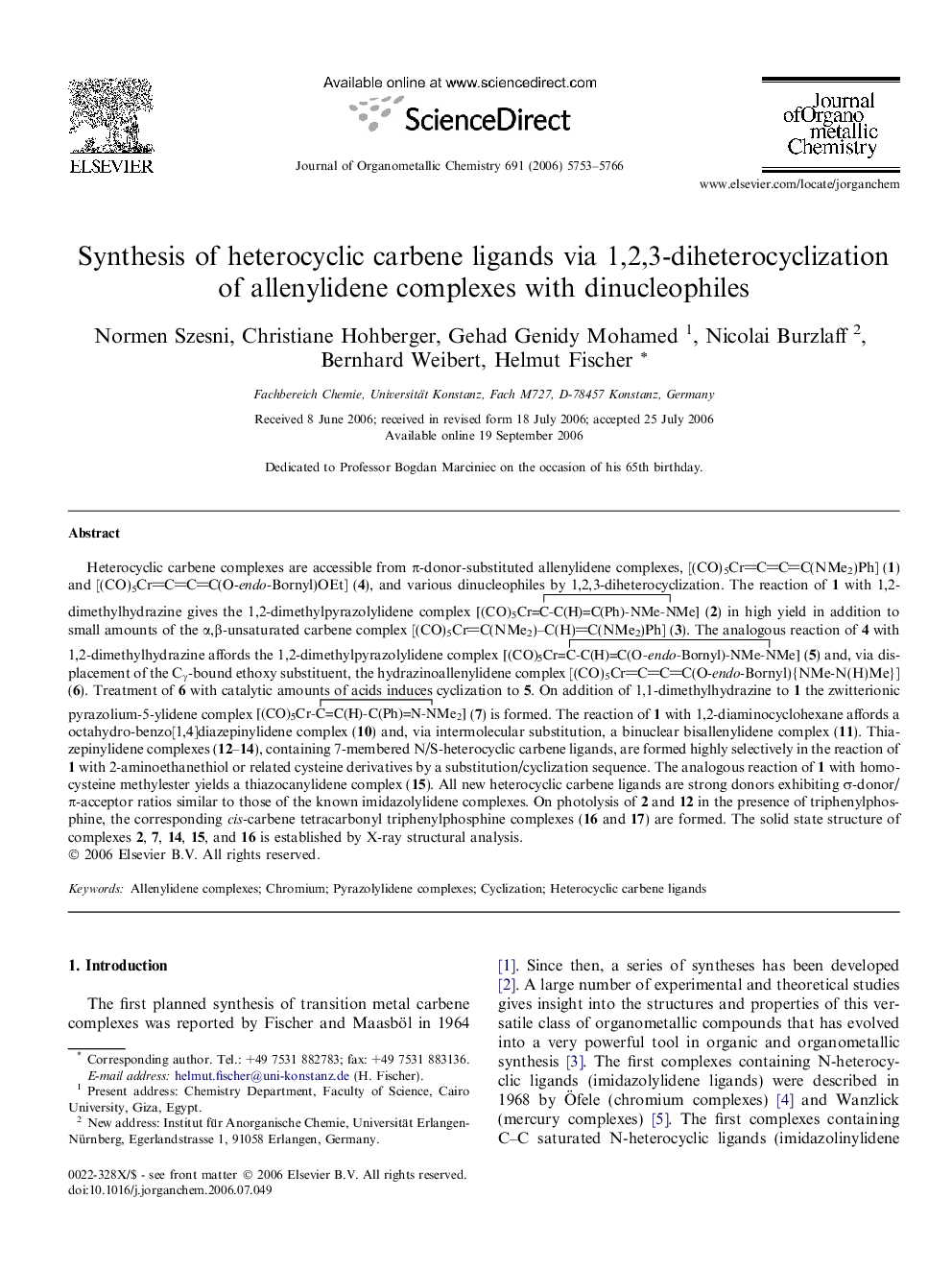| Article ID | Journal | Published Year | Pages | File Type |
|---|---|---|---|---|
| 1328400 | Journal of Organometallic Chemistry | 2006 | 14 Pages |
Heterocyclic carbene complexes are accessible from π-donor-substituted allenylidene complexes, [(CO)5CrCCC(NMe2)Ph] (1) and [(CO)5CrCCC(O-endo-Bornyl)OEt] (4), and various dinucleophiles by 1,2,3-diheterocyclization. The reaction of 1 with 1,2-dimethylhydrazine gives the 1,2-dimethylpyrazolylidene complex (2) in high yield in addition to small amounts of the α,β-unsaturated carbene complex [(CO)5CrC(NMe2)–C(H)C(NMe2)Ph] (3). The analogous reaction of 4 with 1,2-dimethylhydrazine affords the 1,2-dimethylpyrazolylidene complex (5) and, via displacement of the Cγ-bound ethoxy substituent, the hydrazinoallenylidene complex [(CO)5CrCCC(O-endo-Bornyl){NMe-N(H)Me}] (6). Treatment of 6 with catalytic amounts of acids induces cyclization to 5. On addition of 1,1-dimethylhydrazine to 1 the zwitterionic pyrazolium-5-ylidene complex (7) is formed. The reaction of 1 with 1,2-diaminocyclohexane affords a octahydro-benzo[1,4]diazepinylidene complex (10) and, via intermolecular substitution, a binuclear bisallenylidene complex (11). Thiazepinylidene complexes (12–14), containing 7-membered N/S-heterocyclic carbene ligands, are formed highly selectively in the reaction of 1 with 2-aminoethanethiol or related cysteine derivatives by a substitution/cyclization sequence. The analogous reaction of 1 with homocysteine methylester yields a thiazocanylidene complex (15). All new heterocyclic carbene ligands are strong donors exhibiting σ-donor/π-acceptor ratios similar to those of the known imidazolylidene complexes. On photolysis of 2 and 12 in the presence of triphenylphosphine, the corresponding cis-carbene tetracarbonyl triphenylphosphine complexes (16 and 17) are formed. The solid state structure of complexes 2, 7, 14, 15, and 16 is established by X-ray structural analysis.
Graphical abstractNovel heterocyclic carbene ligands are accessible via diheterocyclization from π-donor-substituted allenylidene pentacarbonyl complexes and dinucleophiles, HX–Y–NH2 (XNH, S). The reactions proceed by initial substitution of one group at Cγ of the allenylidene ligand by NH2 followed by addition of XH to the Cα–Cβ bond. The spacer Y determines the size of the ring.Figure optionsDownload full-size imageDownload as PowerPoint slide
